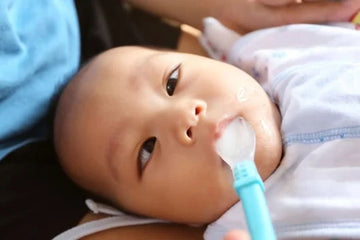As parents, we spend hours researching the safest car seats, the purest organic cottons, and the most educational toys. Yet, one of the most critical decisions we make sits right on the high chair tray three times a day. When it comes to introducing solids and transitioning from bottles, the material of your baby’s dinnerware matters more than you might think.
In recent years, there has been a significant shift in what medical experts recommend for infant feeding. Gone are the days when hard plastics were the default. Today, pediatricians, pediatric dentists, and speech pathologists are increasingly pointing parents toward a safer, softer alternative: silicone.
If you have been searching for the best silicone sippy cup for toddlers or wondering if a silicone feeding set is worth the investment, you are on the right track. At My Hippo Baby, we believe in balancing science-backed safety with practical parenting. Here is a deep dive into why medical experts champion silicone for your little one’s mealtime.
1. The Safety Factor: Eliminating Chemical Risks
The primary reason doctors advocate for silicone over plastic is simple: chemical safety.
The American Academy of Pediatrics (AAP) has released reports urging parents to avoid microwaving food in plastic containers due to the risk of chemicals leaching into food. Traditional plastic feeding gear can contain harmful substances like Bisphenol A (BPA), PVC, and phthalates. These chemicals are known "endocrine disruptors," meaning they can interfere with the hormonal systems that regulate your child’s growth and development.
Why Silicone is Different:
Food-grade silicone is a non-toxic polymer made largely from silica (sand). It does not contain the harsh chemicals found in plastics.
- BPA-Free & Phthalate-Free: High-quality silicone feeding sets are naturally free from these toxins.
- Heat Stability: Unlike plastic, which degrades and leaches chemicals when heated, silicone is heat-resistant. You can safely warm up oatmeal in a silicone bowl or pop a silicone sippy cup in the dishwasher without worrying about chemical runoff.
For parents prioritizing a non-toxic home, switching to a silicone feeding set is one of the easiest and most effective changes you can make to reduce your baby's daily chemical exposure.
2. Oral Development: Gentle Protection for Emerging Teeth
Ask any pediatric dentist, and they will tell you that the transition from bottle to cup is a critical milestone for oral development. Hard plastic spouts can be tough on tender gums and emerging teeth. In contrast, a soft silicone sippy cup mimics the natural flexibility of skin, making the transition from breast or bottle less jarring for an infant.
protecting Soft Tissues
When babies are teething, they gnaw on everything. A hard plastic spoon or cup rim can injure delicate gum tissue if a baby bites down too hard or trips while holding it. Silicone is soft and pliable. If your toddler stumbles while taking a drink, a silicone rim will bend rather than bruise, preventing mouth injuries that are all too common with rigid plastic or stainless steel.
Supporting Speech and Motor Skills
Speech pathologists often recommend straw cups or open cups over hard spouts because they promote better tongue positioning. Many modern silicone cups are designed with this in mind, featuring soft straws or open rims that encourage proper lip closure and swallowing patterns, which are foundational for speech development.
3. Promoting Independence: The Science of "Grip"
Pediatric occupational therapists focus on "activities of daily living," which includes self-feeding. For a baby to learn to eat independently, they need tools that frustrate them as little as possible.
Silicone has a natural, non-slip texture that is easier for small, uncoordinated hands to grasp compared to slippery plastic or glass.
- Sensory Feedback: The tactile sensation of silicone helps babies understand where their hand ends and the object begins.
- Weighted Stability: Silicone is denser than cheap plastic. A silicone cup is less likely to be knocked over by a stray arm movement, and a silicone bowl with a suction base stays put, allowing your child to focus on scooping food rather than chasing their bowl across the table.
This "success" at the table builds confidence. When a child can hold their silicone sippy cup without dropping it, they are more likely to drink water frequently, staying hydrated and happy.
4. Hygiene and Bacteria Resistance
A hidden danger in many porous plastic feeding items is the accumulation of mold and bacteria in deep scratches. Over time, as a toddler uses a plastic fork or bowl, tiny grooves appear where food particles get trapped.
Silicone is non-porous. This means the surface is impenetrable to bacteria and fungus. It is hypoallergenic and resists odors and stains better than many plastics.
- Mold-Free Hydration: One of the biggest complaints parents have with traditional sippy cups is mold growing in the valves. Silicone parts are often designed as single pieces or easy-to-clean structures that can be boiled or sterilized, ensuring your baby’s drink remains uncontaminated.
5. Durability: The "Toddler Test"
While not a medical reason, any pediatrician who is also a parent understands the stress of broken dishes. Glass is chemically safe but dangerous if dropped. Ceramic is heavy and fragile.
Silicone is virtually indestructible. It can be thrown from a high chair, stepped on, and washed thousands of times without cracking, chipping, or shattering. This durability makes it a sustainable, one-time investment that lasts through toddlerhood and can even be passed down to siblings.
6. Making the Switch: What to Look For
Not all silicone is created equal. To ensure you are getting the medical-grade benefits experts recommend, look for these features when shopping for your silicone feeding set:
- 100% Food-Grade Silicone: Ensure the packaging explicitly states this to avoid cheap fillers.
- Platinum Cured: Ideally, look for platinum-cured silicone, which is the highest purity grade.
- Passes the "Pinch Test": If you pinch the silicone and it turns white, it may contain fillers. High-quality silicone maintains its color.
- Practical Design: Look for sets that include suction bottoms for bowls and spill-proof lids for cups to aid in the learning process.
At My Hippo Baby, we have curated our collection specifically to meet these rigorous standards, giving you peace of mind with every meal.
Frequently Asked Questions (FAQs)
Q: At what age can I introduce a silicone feeding set to my baby?
A: You can start using silicone spoons and bowls as soon as your baby is ready for solids, typically around 4 to 6 months. Silicone sippy cups can be introduced between 6 to 9 months as they transition away from bottles.
Q: Is silicone really safer than plastic for babies?
A: Yes. Medical experts generally consider silicone safer because it does not contain BPA, BPS, phthalates, or other harmful chemicals found in plastics. It is also heat-resistant, meaning it won’t leach chemicals when exposed to warm food or dishwashers.
Q: Can silicone sippy cups go in the microwave and dishwasher?
A: Absolutely. High-quality silicone is heat resistant up to 400°F (200°C). You can safely sanitize them in the dishwasher or warm up milk in the microwave without damaging the material or compromising safety.
Q: How do I clean a silicone feeding set to prevent smells?
A: Silicone is easy to clean with warm soapy water or in the dishwasher. If you notice it retaining strong food odors (like garlic), soaking the item in a mixture of white vinegar and hot water for 15-20 minutes effectively neutralizes the smell.
Q: Do silicone cups help with teething?
A: Yes! The soft texture of a silicone cup or spoon is gentle on sore gums. Many babies find relief in chewing on the soft silicone rims, which is safe to do unlike hard plastic which can crack or hurt their mouth.
Conclusion
Choosing the right feeding supplies is about more than just pretty colors; it is about investing in your child’s health and development. By switching to silicone, you are aligning with pediatric recommendations for safety, oral health, and hygiene. It is a small change that makes a massive difference in your daily routine and your baby's well-being.
Ready to upgrade your mealtime routine? Explore our pediatrician-approved collection of durable, non-toxic essentials. From the perfect silicone sippy cup to complete silicone feeding sets, we have everything you need to make feeding fun and safe.
Shop the Silicone Collection Now
My Hippo Baby
Address: North Haven, CT 06473, USA
Phone: +1 (888) 503-6727
Email: support@myhippobaby.com
Website: www.myhippobaby.com





